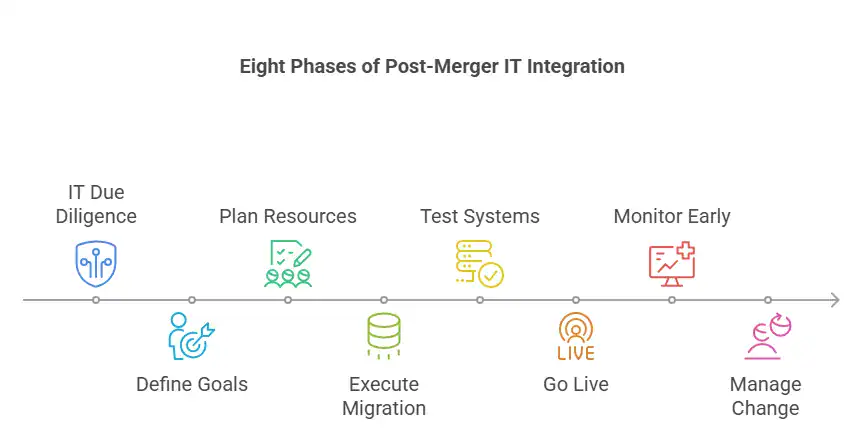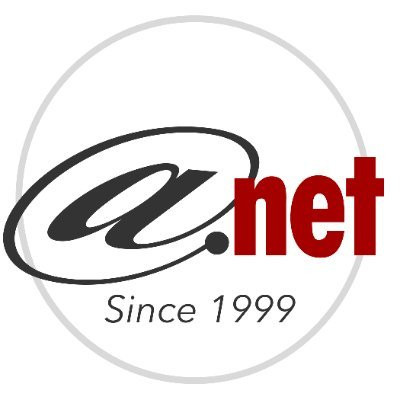Charleston IT Company on Why IT Integration in Mergers & Acquisitions Matters
Many mergers and acquisitions fall short, not because of strategy, but because IT systems remain fragmented.
According to McKinsey, 50–60% of synergy initiatives in M&A are strongly tied to IT, yet businesses overlook most technology issues during due diligence and early post-merger planning.
As Jeffrey S. King, President of AT-NET, says, “IT integration isn't just a technical exercise. It's the architecture of transformation. When done right, it accelerates processes.”
IT integration in M&A goes far beyond connecting servers. It involves:
- Migrating and cleansing large volumes of data without compromising accuracy
- Unifying processes so cross-functional teams can collaborate seamlessly
- Retaining key IT talent and equipping teams to navigate new systems
- Modernizing security controls to mitigate risk and ensure compliance
When executed with precision, IT integration preserves business continuity, strengthens customer trust, and enables faster response to market shifts. Without it, even the most promising deal can stall.
In this blog, our IT company in Charleston uncovers the critical role of IT integration in mergers and acquisitions and shows how to turn integration into a competitive advantage.
Why IT Integration in Mergers and Acquisitions is Critical
IT integration is critical because it shapes what your merged company can achieve. Without connected systems, your teams work in silos, and mistakes happen.
Thoughtful IT integration processes during an M&A help to:
- Protect data (prevent downtime): Smooth integration avoids data mismatches, loss, or duplication.
- Speed up market entry (react faster): Integrated systems help your business offer new services quickly.
- Support tools (manage complexity): M&A software brings everything into one place, reducing manual work and missed deadlines.
Planning the IT landscape in M&A projects
Planning prevents surprises later. Start by understanding what systems exist, overlaps, and gaps.
- List everything (know your assets): Document applications, servers, databases, and cloud tools.
- Spot gaps (find disconnects): Identify outdated apps and processes that rely on single individuals.
- Retire outdated systems (save costs): Remove unnecessary tools to reduce support and free budget.
Overcoming IT challenges in post-merger integration
- Keep talent: Retain IT staff to avoid knowledge loss.
- Train teams: Programs reduce mistakes and boost confidence.
- Balance systems: Phase out legacy platforms carefully.
- Prioritize steps: Start with critical systems first.
- Communicate clearly: Keep staff informed to reduce resistance.
How to Secure Systems During Integration
Security must be planned early. Integration exposes data and systems to new risks.
- Follow standards: Frameworks like ISO/IEC 27001 guide security policies.
- Limit access: Grant only necessary permissions.
- Encrypt data: Protect information in transit and at rest.
- Run audits: Reviews catch weaknesses before attackers do.
The Eight Phases of Post-Merger IT Integration
- IT due diligence: Map systems, processes, and risks.
- Define goals: Set clear metrics.
- Plan resources: Assign staff, timelines, and budget.
- Execute migration: Transfer data and apps carefully.
- Test systems: Fix issues before launch.
- Go live: Provide training and support.
- Monitor early: Fix problems quickly during hypercare.
- Manage change: Share updates to maintain momentum.

The Role of Mergers and Acquisitions Software
Successful M&A integration demands more than spreadsheets. The right software brings visibility and control.
- Automate tasks: Reduce errors and speed integration.
- Track progress: Dashboards keep managers aligned.
- Meet regulations: Audit logs simplify compliance.
Comparing Integration Models: In-house, Hybrid, and Fully Managed
| Model | Pros | Cons |
| In-house | Greater control; skill growth | Higher cost; slower execution |
| Hybrid | Balance of expertise and control | Needs coordination with vendors |
| Fully managed | Fast execution; access to experts | Less control; vendor dependency |
Take the Smarter Path to IT Integration With a Leading IT Company in Charleston
IT integration in M&A determines how quickly you realize value. It requires protecting data, realistic timelines, and team support.
AT-NET brings expertise backed by 300+ certifications from Microsoft, Cisco, and VMware, with 99.999% uptime guaranteed.
Contact our IT firm in Charleston today to discover how we can deliver secure, competitive integration projects.




